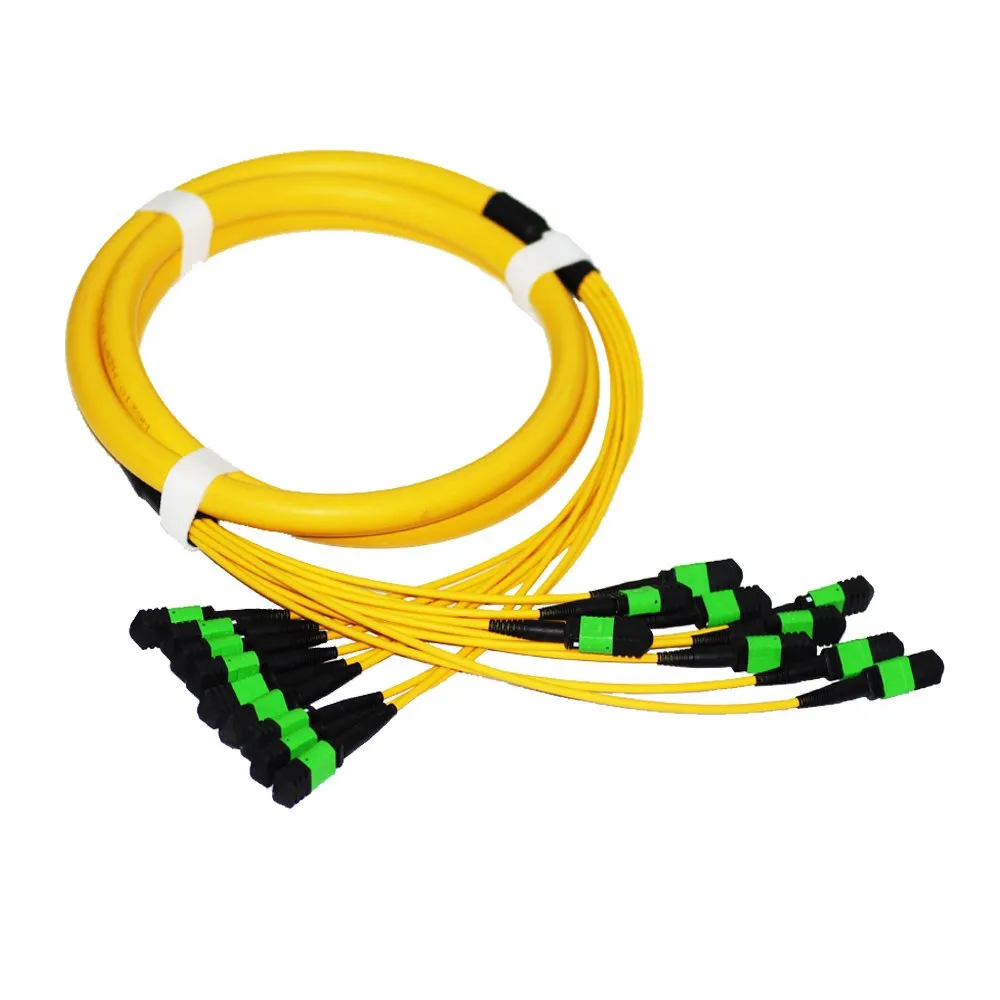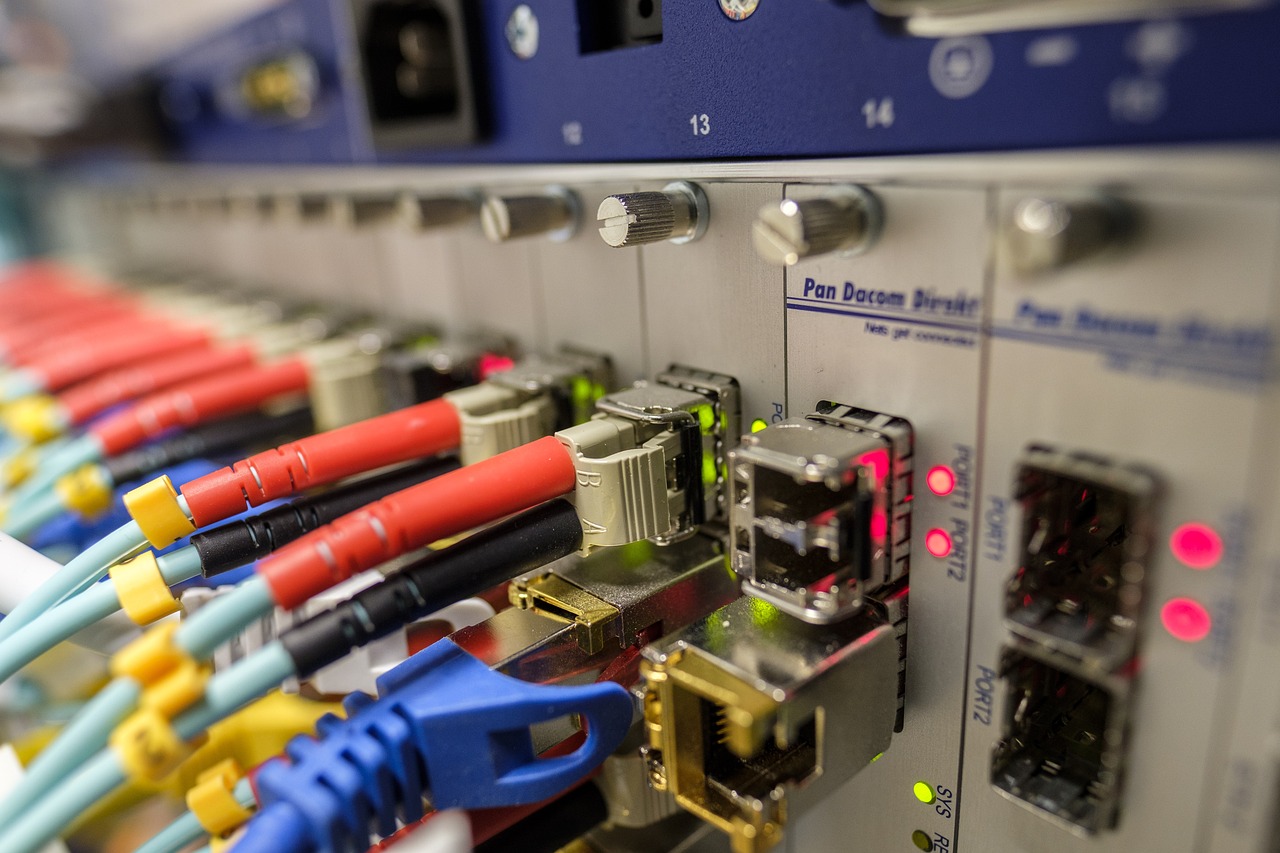Mastering MPO/APC SM OS2 Singlemode OS2 Trunk Cable Technology

Understanding the Basics of MPO/APC SM OS2 Trunk Cable Technology
What is MPO/APC SM OS2?
MPO/APC SM OS2 refers to a type of fiber optic cable technology that plays a crucial role in modern networking infrastructure. Let's break down the acronyms to understand its significance:
Breaking Down the Acronyms
MPO: This stands for "Multi-fiber Push On," which describes the connector type used in these cables. The MPO connector allows for the quick and efficient connection of multiple fibers at once, making it ideal for high-density applications.
APC: APC, or Angled Physical Contact, refers to the polish type of the connectors. The angled facet of the APC connector helps minimize back reflections, ensuring better signal quality.
SM OS2: This denotes "Singlemode Optical Fiber with an Outer Diameter of 2mm." Singlemode fiber is designed to carry a single ray of light, resulting in higher bandwidth and longer transmission distances.
Why Singlemode Fiber?
Singlemode fiber offers several advantages that make it well-suited for long-distance data transmission. Its narrow core allows for a single pathway for light, reducing signal degradation and enabling high bandwidth over extended distances. This makes it an ideal choice for backbone installations and data centers where reliable, high-speed connectivity is paramount.
The Importance of Trunk Cables in Networking
Trunk cables, including those utilizing MPO/APC SM OS2 technology, serve as the backbone of data transmission within network infrastructure.
The Backbone of Data Transmission
Trunk cables act as the primary pathways through which large volumes of data travel between different parts of a network. They provide the essential connectivity required to support various network components and ensure seamless communication.
Speed and Efficiency
By leveraging MPO/APC connectors and singlemode fiber technology, trunk cables facilitate high-speed data transmission with minimal signal loss. This results in efficient and reliable network performance critical for modern data centers and enterprise environments.
The Role of MPO/APC SM OS2 in Modern Data Centres
In the realm of modern data centers, MPO/APC SM OS2 technology plays a pivotal role in ensuring seamless operations and high-performance connectivity.
Data Centre Infrastructure and SM OS2
High-Speed Data Transmission
The utilization of MPO/APC SM OS2 within data center infrastructure enables high-speed data transmission, facilitating the swift exchange of large volumes of information between network components. This capability is essential for supporting the demanding requirements of contemporary data processing and storage systems.
Scalability and Flexibility
With MPO/APC SM OS2 technology, data centers benefit from enhanced scalability and flexibility. The inherent design of singlemode fiber allows for extended reach without compromising signal integrity, providing data centers with the flexibility to expand their infrastructure while maintaining optimal performance levels.
MPO/APC Connectors: The Unsung Heroes
Ensuring Secure and Reliable Connections
The deployment of MPO/APC connectors ensures secure and reliable connections within data center environments. These connectors are designed to minimize back reflections, thereby safeguarding the integrity of transmitted signals and reducing the risk of disruptions or data loss.
The Impact on Data Centre Performance
The impact of MPO/APC SM OS2 on data center performance cannot be overstated. By leveraging this advanced fiber optic technology, data centers can achieve unparalleled levels of connectivity and operational efficiency, ultimately enhancing overall performance and reliability.
How Trunk Cables Power Backbone Installations
Trunk cables play a pivotal role in powering backbone installations, serving as the essential conduits for seamless data transmission and network connectivity.
Understanding Backbone Installations
The Spine of Network Infrastructure
Backbone installations form the foundational framework of network infrastructure, akin to the central nervous system that interconnects various components and facilitates the smooth flow of data across the entire network.
Connecting Different Parts of a Network
These robust installations act as the unifying force, linking diverse network segments and enabling cohesive communication between different parts of the network architecture. They are instrumental in ensuring that data can traverse efficiently and reliably throughout the entire network ecosystem.
The Role of SM OS2 in Backbone Installations
Long-Distance Data Transmission
SM OS2 technology plays a crucial role in backbone installations by enabling long-distance data transmission with unparalleled efficiency. The utilization of singlemode fiber ensures that data signals travel extended distances without compromising on signal integrity or speed, making it an ideal choice for backbone connectivity.
Future-Proofing Networks
By incorporating SM OS2 into backbone installations, networks are effectively future-proofed against evolving technological demands. This advanced fiber optic technology provides the scalability and performance required to meet the increasing data transmission needs of modern networks, ensuring longevity and adaptability in an ever-changing digital landscape.
Practical Tips for Handling and Maintenance
When it comes to MPO/APC SM OS2 trunk cable technology, proper handling and maintenance are essential to ensure optimal performance and longevity. Here are some practical tips to consider:
Best Practices for Trunk Cable Management
Organizing for Efficiency
Implement a structured approach to trunk cable management by organizing cables based on their intended use and destination. Utilize color-coded labels or tags to differentiate between various connections, making it easier to identify and troubleshoot issues when necessary.
Avoiding Common Mistakes
Be mindful of common mistakes such as excessive bending or twisting of cables, which can lead to signal loss or damage. Additionally, ensure that cables are not subjected to unnecessary strain or pressure, especially at connection points, to maintain signal integrity and overall cable health.
Maintaining Your MPO/APC SM OS2 Setup
Regular Check-ups
Schedule routine inspections of your MPO/APC SM OS2 setup to identify any signs of wear, damage, or connectivity issues. Addressing potential issues early can prevent larger problems down the line and help maintain consistent network performance.
Cleaning and Care Tips
Regularly clean connectors and adapters using appropriate tools and solutions designed for fiber optic components. Dust, dirt, or debris accumulation can impact signal quality, so maintaining clean connections is crucial for preserving the efficiency of your MPO/APC SM OS2 setup.
See Also
Exploring MPO and APC 12-Core Fiber Optic Attenuators for Female-to-Male Connections
Uncovering Top-Quality 12-Core Singlemode OS2 SMF28e MPO SC/APC Fiber Optic Trunk
Locating a 1m LC UPC Duplex Fiber Optic Patch Cable for OS2 Uses
Optimal 1m LC to ST OM2 Mode Conditioning Fiber Optic Patch Cable
Essential 1:32 Fiber Optical Splitter with SC APC Pigtails Specs


